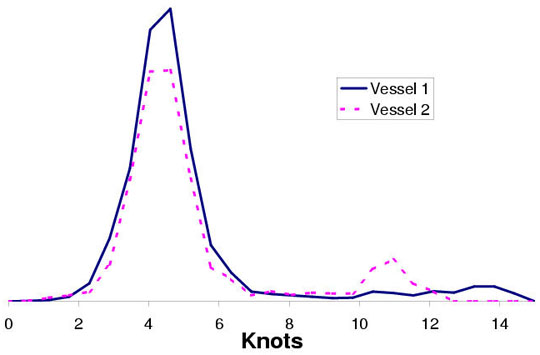

|
| Error processing SSI file |
|
||
|
Status of Stocks and Multispecies Assessment Program The AFSC continues to study the effect of commercial fishing on walleye pollock abundance and distribution. One method to assess fishery effects on Steller sea lion prey involves using replicated scientific surveys at study and control sites. However, there are logistical constraints to scientific surveys, such as the difficulty of securing sufficient ship time to conduct replicate surveys, the lack of appropriate study and control sites in the eastern Bering Sea (EBS), and the legal obstacles of implementing an adequate survey design under Endangered Species Act (ESA) restrictions. A novel approach to the study of the pollock distribution, particularly in winter and on spawning grounds, is being developed at the AFSC. The approach is to solicit the cooperation of commercial vessels that carry state-of-the art echo-sounding equipment to log their acoustic data. This was first proposed after the 1999 fishing season when fishing practices changed due to the American Fisheries Act. Under the new regulations, most vessels fishing pollock in the EBS are part of a cooperative with a fixed amount of quota share. This practice has greatly reduced the “race for fish” and has given vessel operators much more time to survey for pollock prior to actually fishing (e.g., Fig. 1 below). The hope and goal of this project is that by post-processing the raw acoustic data, particularly during a vessel’s exploration/searching process, methods can be developed to provide insight on the aggregation characteristics of pollock during different locations and times of year. The strength of the approach is realized by deployment of the system on multiple vessels. Over the course of a fishing season, exploration of potential fishing areas by the catcher/processor fleet is thorough, with many areas revisited multiple times by different vessels.
Figure 1. Total distance traveled, January-March for seven pollock vessels, 1997-2000. The increase in distance traveled is thought to be due to more time available for searching. A viability study began in January 2002 with the cooperation of three vessels. The vessels selected have SIMRAD ES60 echo-sounders, which have the capability of downloading raw acoustic data. The AFSC, with support from NMFS Office of Science and Technology, provided hardware and software upgrades for these echosounders and also provided hardware and software to configure the sounders with removable, high-capacity disk drives (20 gigabyte storage capacity). The drives served to log the data from the echosounders by periodically copying the raw data files directly to the removable storage devices.
Figure 2. Cooperative study vessel operation locations in the eastern Bering Sea, 1-8 February 2002. Figure 2 shows the relative spatial distribution of two vessels with systems operating during the first week of February 2002. This figure shows that as data from more vessels become available, it will be possible to generate a reasonably comprehensive map of pollock distribution. Even more interesting will be to observe how such maps change over time. We hope that some standardization between different vessels will be possible by matching vessels fishing nearby (and cross-checked with observer data records of actual catch). Other routine analyses of the data include developing methods for categorizing vessel activity. For example, two vessels have very similar modes of operation speeds (Fig. 3). 
Figure 3. Frequency distribution of speed for two vessels participating in the EBS acoustic data storage project, 20 January -9 February 2002.
As of March 2002, one vessel reported technical problems during the first
10 days of the fishery, while another boat had equipment failure during
the latter part. Preliminary work indicates that there are also problems
on the post-processing side. The size of the data files that the vessels
store is very large and we are currently seeking ways to easily process
these data into more aggregated formats for easier analysis. By Jim Ianelli. |
|
AFSC Quarterly Feature Auke Bay Lab National Marine Mammal Lab RACE Division REFM Division Quarterly Index Quarterly Home |
|
|
||
|
|
||